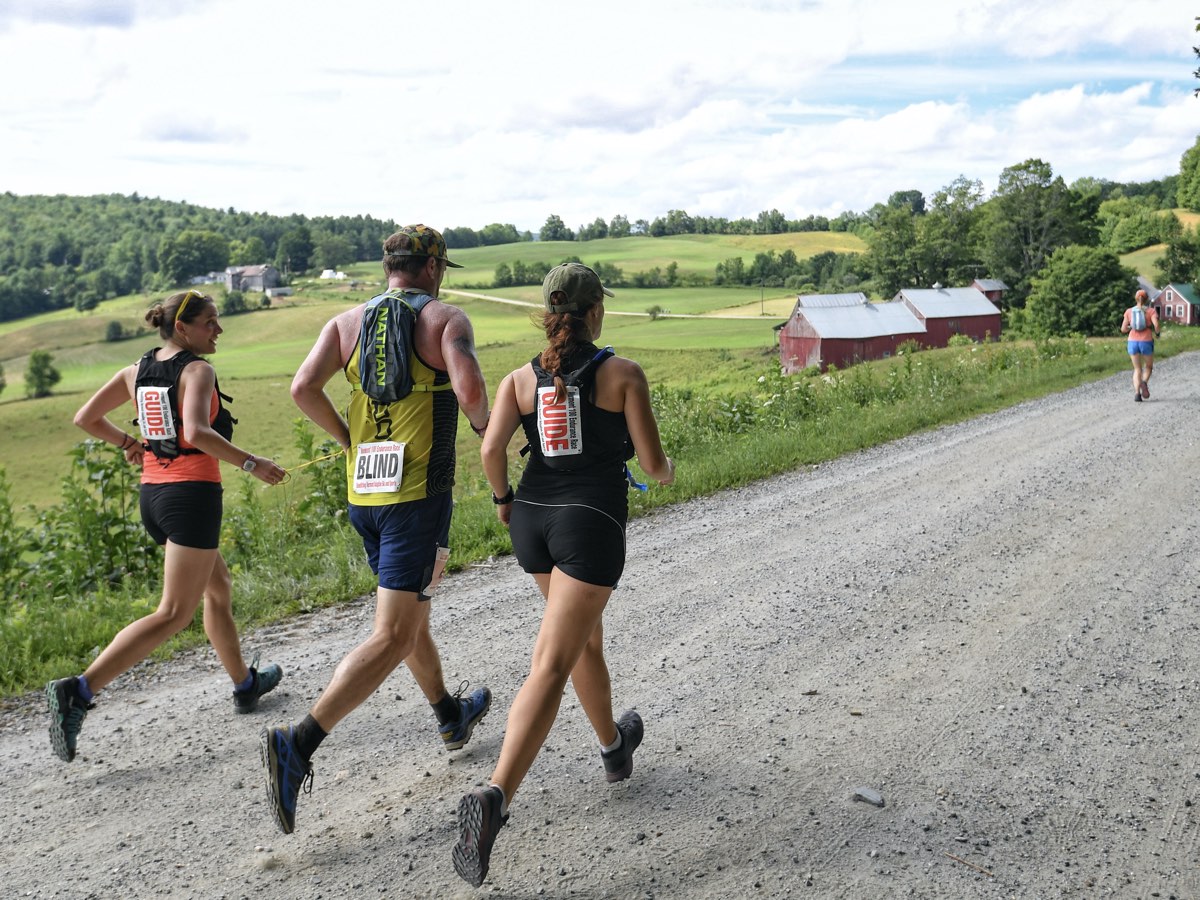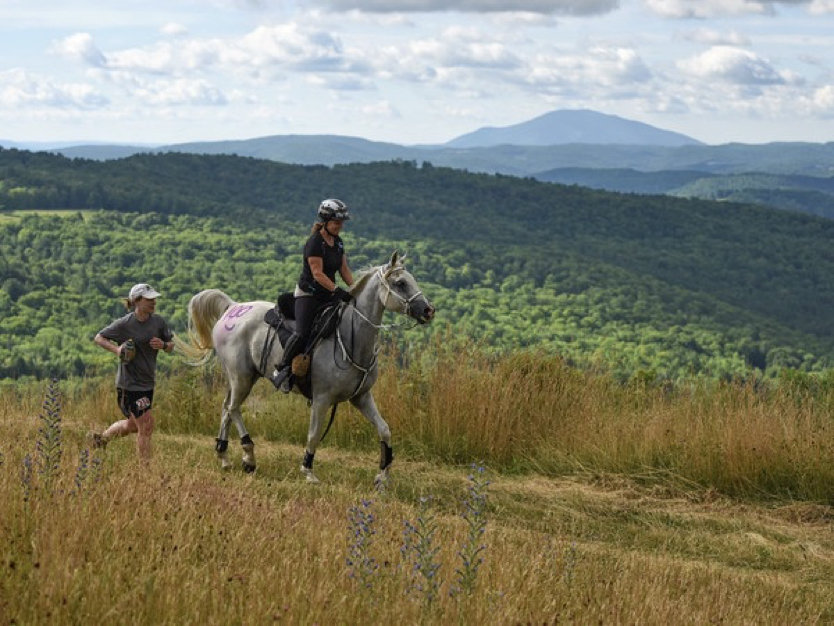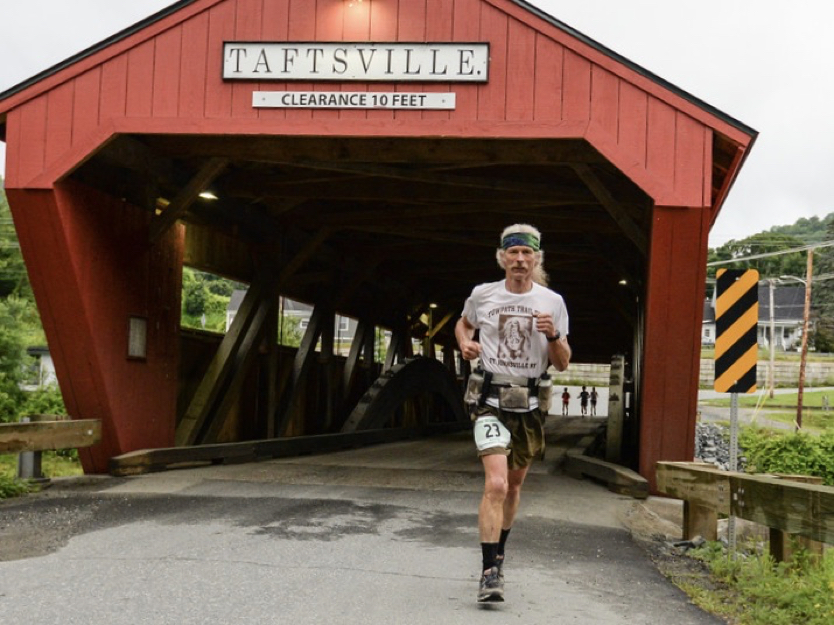 [Author’s Note: This is the fifth article in a six-part monthly series on classic American ultramarathons. Once a month from March through August, I profile a race and share a bit of its lore and history. Here is part one on the Way Too Cool 50k, part two on the Zane Grey 50 Mile, part three on the Massanutten Mountain Trails 100 Mile, and part four on the Highlands Sky 40 Mile. I hope you enjoy them!]
[Author’s Note: This is the fifth article in a six-part monthly series on classic American ultramarathons. Once a month from March through August, I profile a race and share a bit of its lore and history. Here is part one on the Way Too Cool 50k, part two on the Zane Grey 50 Mile, part three on the Massanutten Mountain Trails 100 Mile, and part four on the Highlands Sky 40 Mile. I hope you enjoy them!]
Back in the late 1970s, a group of equestrian riders created a 100-mile endurance ride within the state of Vermont. Traversing the gravel paths and trails of the southeastern of the of the state, the ride became one of the most popular in the country. In 1989, Steve Rojek, a local equestrian and owner of Smoke Rise Farm near the start of the ride, approached Laura Farrell, a runner and rider from the area, and asked if she wanted to run the horse race course on foot. Farrell was a logical candidate as she had completed both the Tevis Cup Endurance Ride equestrian event and the Western States 100 running race back in 1982. From there, the Vermont 100 Mile was born.
For the next 15 years, the Vermont 100 started and finished at the Rojeks’ beautiful farm, and Laura Farrell served as the race director. The Vermont 100 is unique in that the entire event is supported by Vermont Adaptive Ski and Sports, an organization Farrell founded in 1987.
Current race director Amy Rusiecki is particularly proud of the long-time relationship with Vermont Adaptive, “We have been inclusive of adaptive athletes ever since our founding. In fact, for the past three years I have had the pleasure of guiding blind runners from the start for 15 or 20 miles. It is one of the parts of the race I am most proud of.”
After running the race six times between 2009 and 2014, Rusiecki became the logical choice to become the RD when previous director Julia Hutchinson stepped down in 2014. Hutchinson had assumed the reins from her late father Jim, himself a long-time Vermont Adaptive volunteer, after his unexpected death in 2008.
Rusiecki notes two aspects of the race, in particular, that make it unique, “First, it is the only 100 miler in which the runners still run with the horses. In that way it has strong connection to the roots of the sport. Second, as the course travels through nine different communities and at least 60 separate pieces of private property, it is a supreme logistical undertaking.”
Rusiecki manages all of those challenges with a logistics committee who works with local communities and landowners to keep the race operational. In addition, under Rusiecki’s leadership, most of the aid stations are run by regional running clubs and these groups are given a great deal of autonomy in designing and supplying their aid stations.
“We’ve been able to maintain the old-school vibe of the past while adapting to the growth in the sport and in our race. We want to provide a meaningful experience but not be stuck in the past.” Rusiecki says.
The Vermont 100 course is sneaky hard. While over 70 miles of the race take place on the ubiquitous rolling gravel roads that characterize southeastern Vermont, the trail sections can be muddy, rutted, and overgrown. And, with some 17,000 feet of vertical gain, Vermont is certainly not an “easy” 100 miler as some have claimed over the years.
For me, having run Vermont five times, I find that it is a perfect event for the region. Known for pastoral countryside and a fierce spirit of independence, the race, like the region, is an authentic reflection of Vermont culture. Each time I have been there, as a runner and crew, I have been impressed with the good, old-fashioned hospitality that is imbued into all aspects of the event. While there was no Vermont 100 in 2020 due to the COVID-19 pandemic, I am confident that the race will come back better than ever in 2021.
Bottoms up!
This week’s Beer of the Week comes from Hill Farmstead Brewery in Greensboro Bend, Vermont. Their unfiltered German-style Helles lager, Marie, is a light and crispy lager that is slightly hazy and surprisingly rich. Hill Farmstead is one of the top breweries in the country and Marie is certainly one of their first-rate offerings.
Call for Comments
If you’ve run the Vermont 100 Mile, leave a comment to share your experience!




